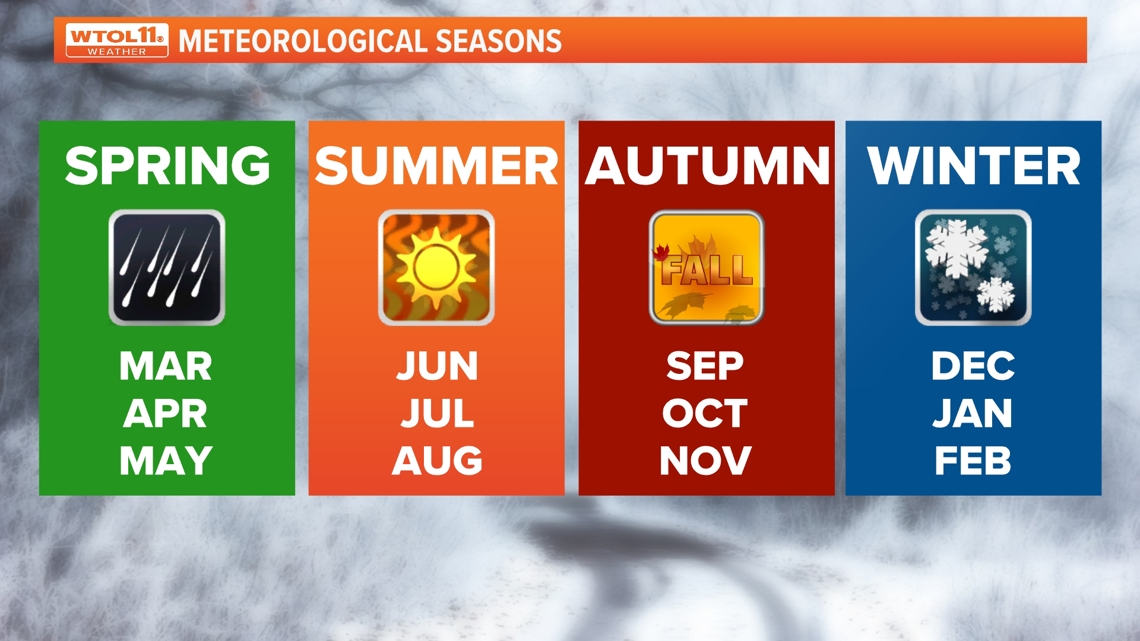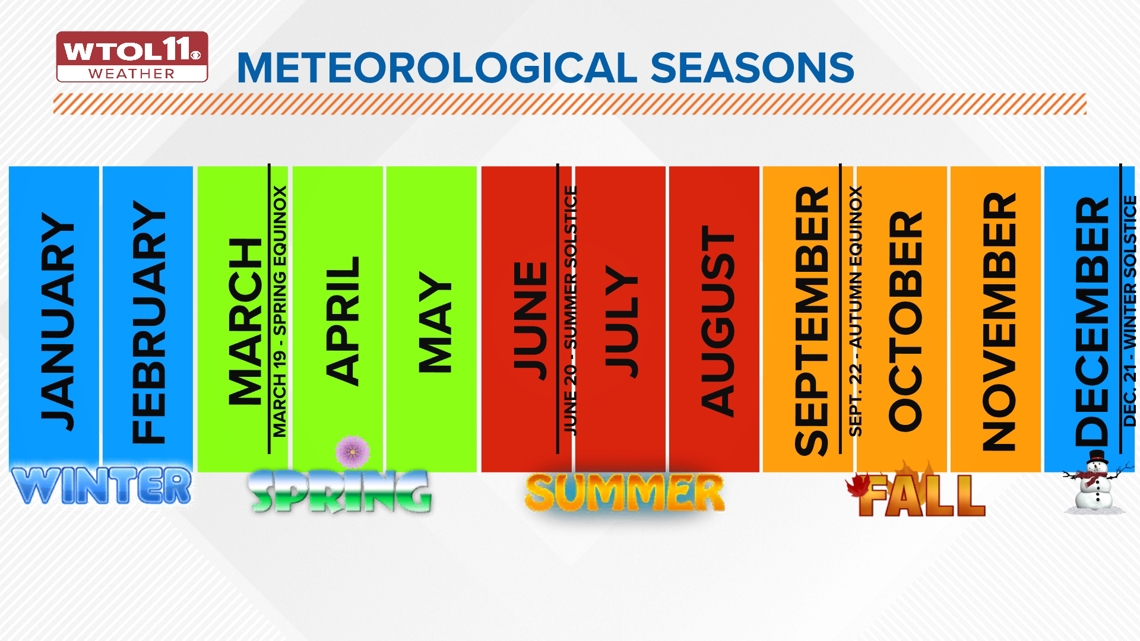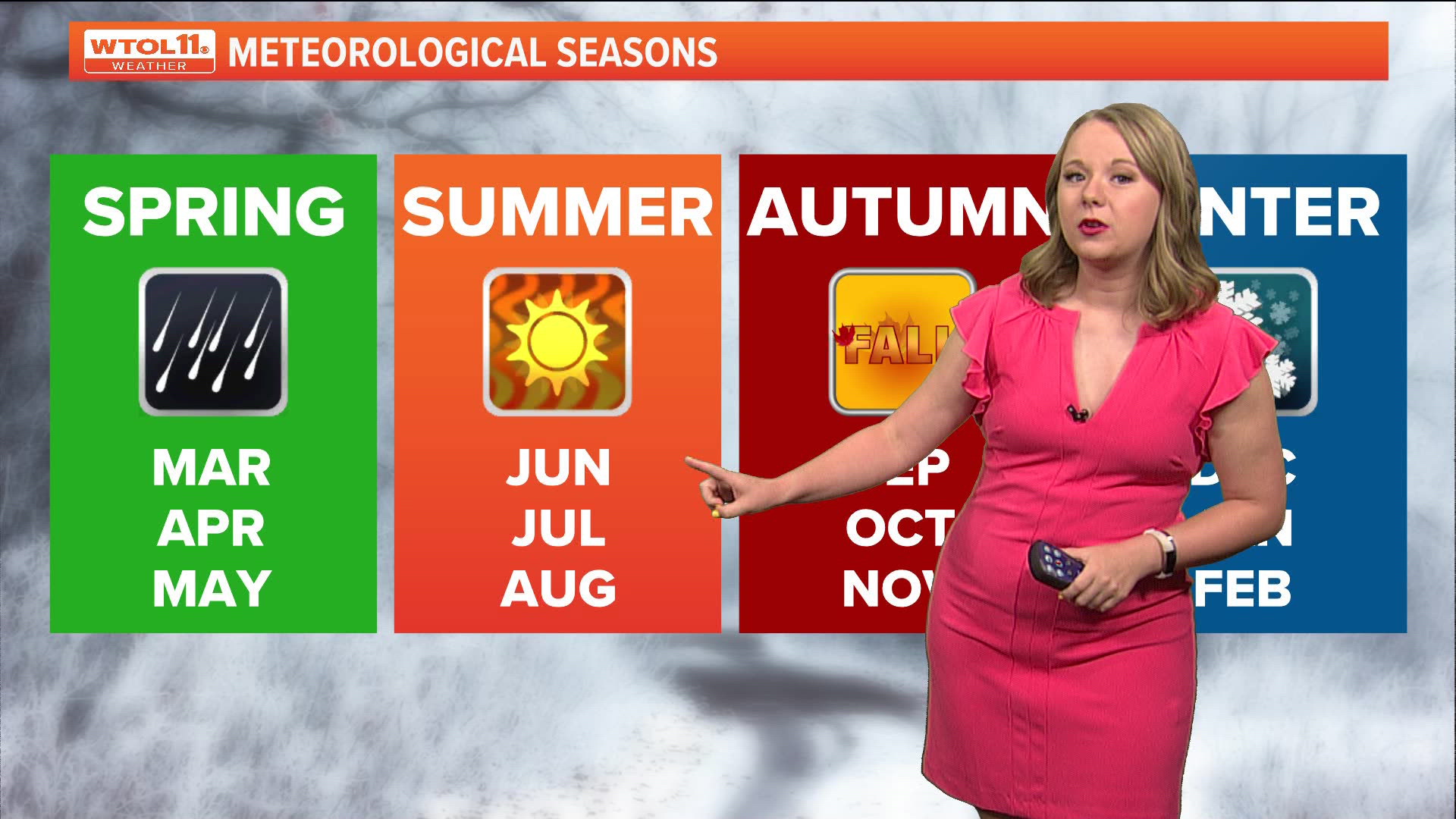OHIO, USA — Northwest Ohio saw some summer-like weather a little earlier this year. Toledo's first 90-degree day was May 19, making it feel like summer in May, which is technically still meteorological spring.
Meteorological seasons begin the first of the month and will last for the next three months. This makes it easier to compare and organize climate data by having the same dates for the season.
Meteorological summer always begins on June 1 and lasts until Aug. 31. This is similar to meteorological fall, winter and spring.


Here's a breakdown of the meteorological seasons:
Meteorological summer
The three warmest months of the year are June, July and August, which are considered the summer months. Astronomical summer will begin around June 21 and end around Sept. 22. The first day of summer varies each year and it has to do with how high the sun is in the sky. The summer solstice happens between June 20 and June 22. This is considered an astronomical summer.
Meteorological fall
Meteorological fall is September, October and November. While those first few weeks of September are technically considered astronomical summer, it is considered meteorological fall. This is around the time when the leaves will begin to change color in Ohio. Temperatures begin to cool down but will really drop after the start of astronomical fall around Sept. 22. The beginning of astronomical fall varies depending on when the equator is most directly in line with the sun. This makes for an equal amount of darkness and daylight for both hemispheres.
Meteorological winter
Meteorological winter begins Dec. 1 and ends on the last day of February. Astronomical winter begins around Dec. 21, making it the shortest day of the year for the amount of daylight. The Northern Hemisphere is tilted away from the sun, causing it to receive less daylight than the Southern Hemisphere. Since there are a few weeks where astronomical fall is in December, there is a chance there could be snow in the fall season. The average date of the first measurable snowfall in Toledo is Nov. 17.
Meteorological spring
Meteorological spring is March, April and May. The Vernal Equinox happens a few weeks after that in the middle to end of March. This is when the equator is equal on both sides, making it 12 hours of daylight and 12 hours of darkness.



